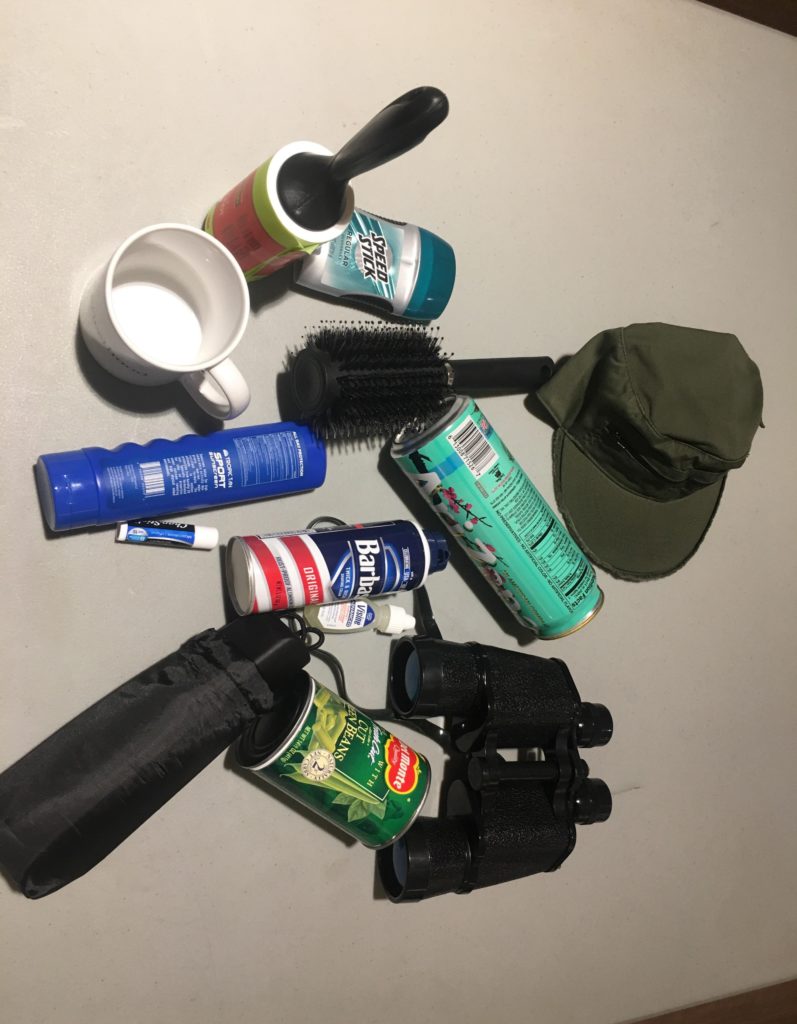A pair of binoculars. A cold cream container. Or, the hollowed out tube of shaving cream.
A parent might not think twice about these common household products in their teenager’s bedroom. But, some of these items that are sold online are fake and designed to have twist off tops and bottoms revealing secret compartments where a person can hide valuables – including money, jewelry and even drugs.
“Most people don’t know about the twist-off items. This stuff is easily accessible off the internet,” Indian River Shores Public Safety Director Rich Rosell said. “They are designed to look very much like brand items, but they are counterfeits. However, name brand items can be turned into drug containers with simple tools and some ingenuity.”
Rosell said he comes from a place in New Jersey where kids are jumping in front of trains because they need to escape the pain from drug addiction. He, along with community partners, urge parents to take precautions in their household to prevent possible drug abuse.
Shores officers and the Substance Abuse Free Indian River (SAFIR) coalition want parents to take a closer look at these items when looking through their teenagers’ rooms. Some parents might discover their child might be taking drugs.
Alcohol, marijuana and e-cigarettes are among the top drugs used by Florida teens, according to SAFIR. SAFIR and Shores officers held a joint presentation Wednesday at the Shores Community Center to educate parents on spotting signs that their child might be using drugs.
“Kids will hide stuff wherever they can. “Look for things out of place.” Rosell said. “Keeping (drugs) in their room is very common because it is there and they want to have access to it.”
Parents were surprised as Rosell held up a tube of chap stick and twisted off the bottom, showing how a person can easily store pills inside.
Parent Ladonna Williams said the presentation was very helpful. She said one of her sons, now in 9th grade, came home seemingly under the influence after taking a combination of prescription cough syrup containing the opiate codeine, an energy drink and a soda.
The slang terms for the combination are “lean,” sizzurp” and “purple drank,” made popular by rappers like Lil’ Wayne and others. The mixture gives the person a euphoric feeling, Rosell said.
“I made him drink milk and take a shower,” said Williams, of Gifford. “He said he drunk ‘lean.’ He was doing it all day in school.”
Williams said her son got the drug from his friend. Williams said she already inspects the rooms of her five children to make sure everything is in order.
“I pay attention to anything that is abnormal,” Williams said.
Rosell said lean is sometimes mixed with alcohol, which increases the chances of an overdose since both substances depress the central nervous system. Rosell said Indian River Shores has had three opioid-related deaths in the last few years.
At some parties, when teens can’t get their hands on their drug of choice, they will grab pills from their parents’ medicine cabinets and bring them, Rosell said. They are commonly referred to as ‘pharm parties’, pill parties or ‘skittles parties.’
“It’s very dangerous because of the possibilities of the antagonistic side effects of different drugs,” Rosell said.
With the help of the International Association of Chiefs of Police and Treasure Coast Opioid Task Force, Shores officers have trained school officials under a new program designed to help educators recognize drug abuse among students. Under the Drug Information Training for Educational Professionals program, officers have trained teachers, nurses and staff at Indian River County and Martin school districts.
Since the concept is rather new, it’s unclear if the districts have applied the program at their schools.
No child becomes addicted to drugs because they want to be an addict, Rosell said. The public safety director said some kids try a particular drug one too many times, and before they realize it, it’s too late.
“Some kids have simple surgeries, get addicted to pills and can’t fight their addiction off,” Rosell said. “Searching your child’s room isn’t about trust or a lack of trust. It’s about being vigilant in a world where one bad choice can cost a child his or her life.”

